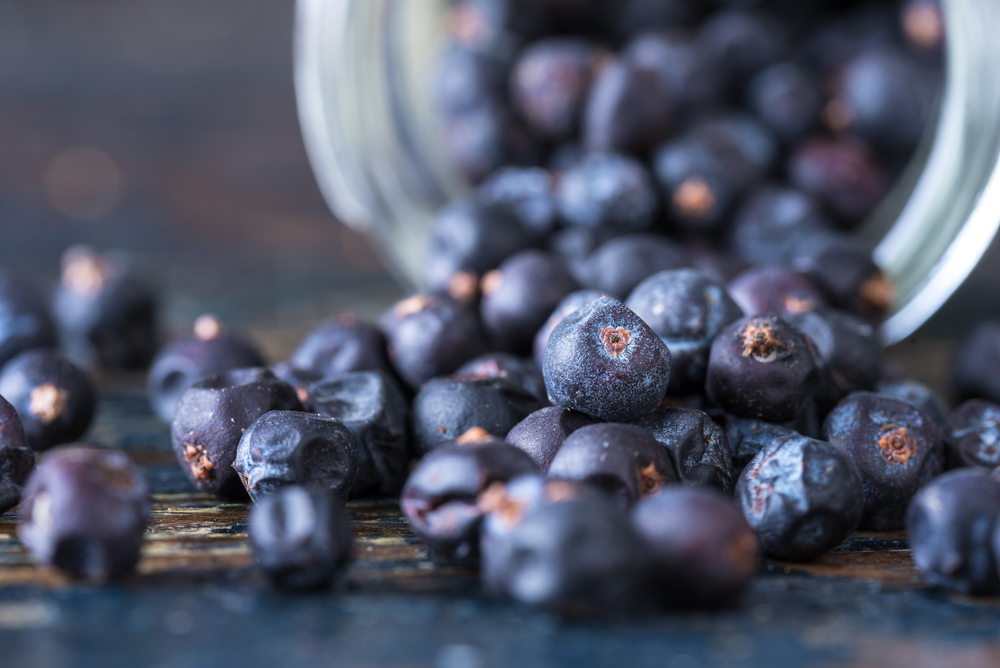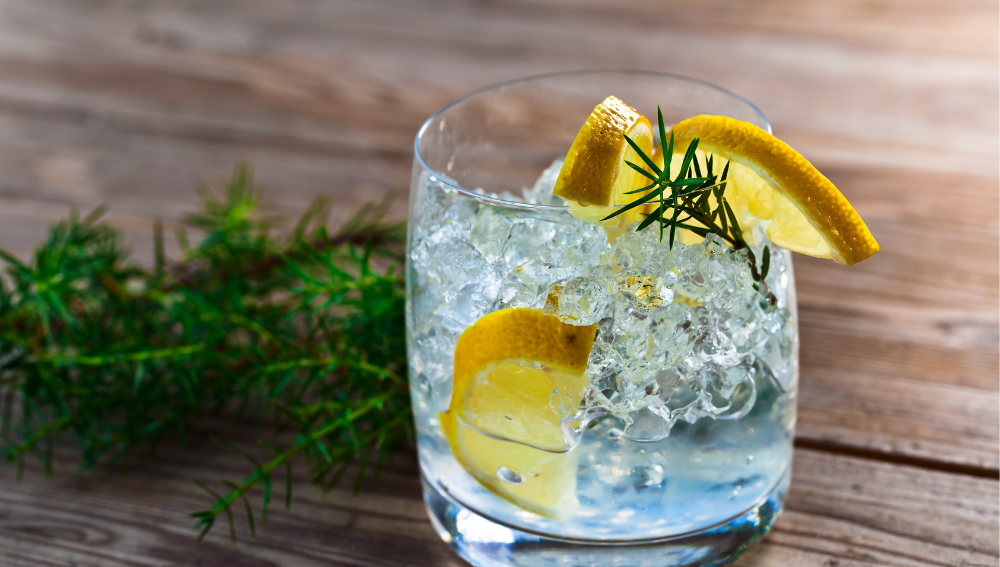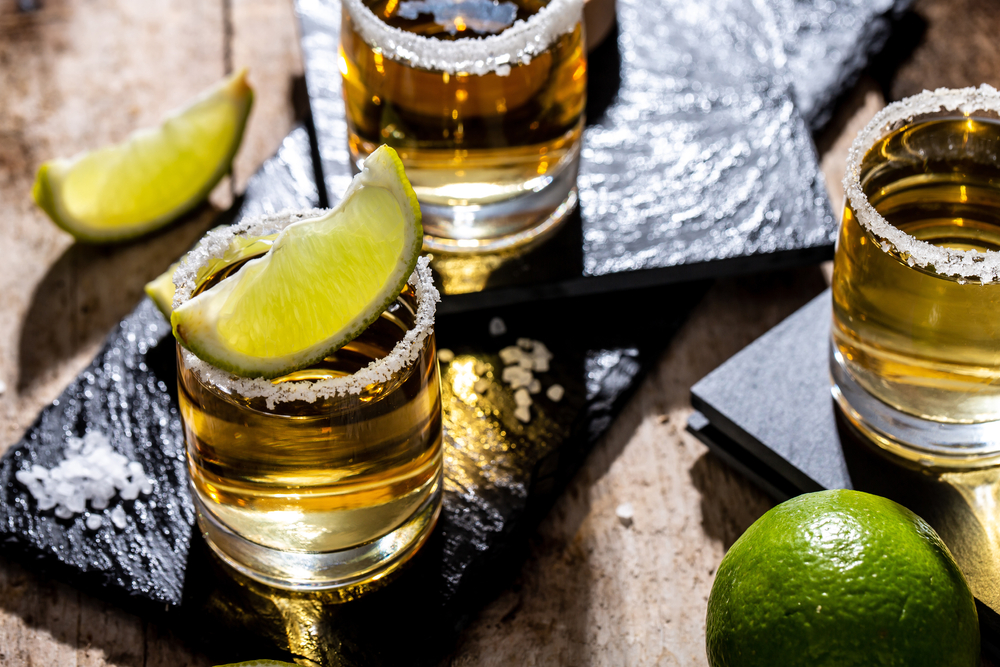I’ve tasted many spirits in my life, but gin has always been one of my favorites. It’s a versatile liquor that can be enjoyed in many different ways, from a classic gin and tonic to a more complex cocktail.
However, if you’ve never tasted gin before, you might be wondering what it tastes like. In this article, I’ll explain what gin tastes like and what gives it its unique flavor profile.

Gin is a distilled spirit that is made from a base of grain or other neutral spirits, and flavored with botanicals such as juniper berries, coriander, citrus peel, and other spices.
The flavor of gin is dominated by the taste of juniper berries, which gives it a distinctive piney, resinous flavor. Other botanicals are added to give the gin more complexity and depth of flavor.
Depending on the type of gin, the flavor can range from dry and herbal to sweet and fruity.
Key Takeaways
- Gin is a distilled spirit flavored with botanicals such as juniper berries, coriander, and citrus peel.
- The flavor of gin is dominated by the taste of juniper berries, which gives it a piney, resinous flavor.
- The flavor of gin can vary depending on the type of gin, ranging from dry and herbal to sweet and fruity.
The Basics of Gin
As a gin lover, I know that gin is a spirit that is distilled from grain and flavored with botanicals, most notably juniper berries.
The juniper berries give gin its distinctive piney taste and aroma, which is why it is often described as tasting like a Christmas tree.
Gin is typically made by distilling a neutral spirit with juniper berries and other botanicals, such as coriander, angelica root, orris root, and citrus peel.
The botanicals are added to the neutral spirit during the distillation process, which extracts their flavors and aromas.
The alcohol content of gin can vary, but it is typically around 40% ABV (alcohol by volume). The higher the ABV, the stronger the gin will taste, so it’s important to choose a gin with an ABV that suits your taste.
The quality of the gin also depends on the quality of the ingredients used and the distillation process. A well-made gin will have a balanced flavor profile with a smooth finish, while a poorly made gin can taste harsh and unbalanced.
Overall, gin is a versatile spirit that can be enjoyed on its own or as part of a cocktail. Its unique flavor profile makes it a popular choice for mixed drinks, but it can also be enjoyed neat or on the rocks.
Different Types of Gin
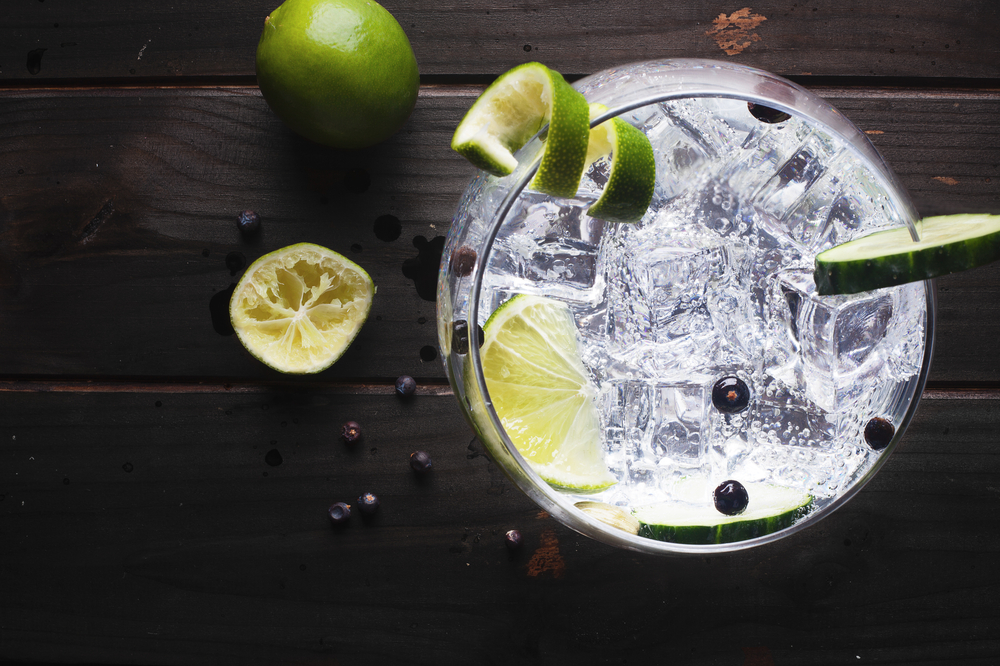
When it comes to gin, there are several different types to choose from. Each type has its own unique flavor profile and is made using different ingredients and distillation methods. In this section, I will explore some of the most popular types of gin.
London Dry Gin
London Dry Gin is the most well-known type of gin and is often used as a base for many classic cocktails. It is made using a combination of botanicals, including juniper, coriander, and citrus, and is distilled multiple times.
Despite its name, London Dry Gin can be made anywhere in the world, as long as it meets certain production standards.
Old Tom Gin
Old Tom Gin is a slightly sweeter style of gin that was popular in the 18th and 19th centuries. It is made using a similar combination of botanicals as London Dry Gin, but is sweetened with sugar or other sweeteners.
Old Tom Gin is often used in cocktails that require a sweeter flavor profile.
Plymouth Gin
Plymouth Gin is a type of gin that is made exclusively in Plymouth, England. It is made using a unique combination of botanicals, including juniper, coriander, and citrus, and is distilled using a mix of wheat and barley.
Plymouth Gin has a slightly sweeter flavor profile than London Dry Gin and is often used in classic cocktails like the Martini and the Negroni.
Genever
Genever is a traditional Dutch style of gin that is made using a combination of malted barley, wheat, and rye. It has a slightly sweeter flavor profile than London Dry Gin and is often aged in oak barrels, which gives it a unique flavor.
Genever is often used in cocktails that require a more complex flavor profile.
Contemporary Gin
Contemporary Gin is a newer style of gin that has become popular in recent years. It is made using a wide variety of botanicals, which gives it a unique flavor profile.
Contemporary Gin can be made using almost any combination of botanicals, which makes it a versatile spirit that can be used in a wide range of cocktails.
Understanding Gin Flavors
As a distilled spirit, gin is made from grain and flavored with botanicals. The flavor profile of gin can vary depending on the specific brand and recipe used in its production.
However, most gins have a few dominant flavor notes that are common across brands. Here are some of the most common flavor profiles of gin:
Juniper Dominant
Juniper is the most important botanical in gin, and it is responsible for the piney flavor that is characteristic of the spirit.
Gins that are juniper dominant have a strong, resinous flavor that can be described as piney, woody, or herbaceous. The juniper flavor can be quite intense in some gins, while in others it is more subtle.
Citrus Dominant
Many gins contain citrus peel in their botanical blends, which gives them a zesty, refreshing flavor. Citrus dominant gins have a prominent citrus flavor that can be described as bright, tangy, and slightly sweet. The citrus notes can be subtle or intense depending on the gin.
Herb and Spice Dominant
In addition to juniper and citrus, many gins contain a variety of other botanicals, such as coriander, cinnamon, anise, and cardamom.
Gins that are herb and spice dominant have a complex, layered flavor profile that can be described as spicy, earthy, and aromatic. The specific herb and spice notes can vary depending on the gin.
Floral Dominant
Some gins contain botanicals like orris root and angelica root, which give them a floral flavor profile.
Floral dominant gins have a delicate, perfumed flavor that can be described as sweet, floral, and slightly earthy. The floral notes can be subtle or intense depending on the gin.
Overall, the flavor of gin is complex and multi-layered, with a range of botanicals contributing to its unique taste. Whether you prefer a juniper dominant gin or a more citrus or floral forward gin, there is a gin out there for every taste preference.
Gin in Cocktails

Gin is a versatile spirit that can be used to create a wide range of cocktails. In this section, I will discuss some of the most popular gin cocktails, including the Gin and Tonic, Martini, Negroni, Tom Collins, and Gimlet.
Gin and Tonic
The Gin and Tonic is a classic cocktail that is a favorite among gin lovers. To make this cocktail, you need gin, tonic water, lime, and ice. The quinine in tonic water gives the drink its unique bitter flavor, which pairs perfectly with the piney taste of gin.
To make a Gin and Tonic, fill a glass with ice, add 2 ounces of gin, and top it off with tonic water. Squeeze a lime wedge over the top and drop it in the glass for a refreshing and easy-to-make cocktail.
Martini
The Martini is a classic cocktail that has been around for over a century. To make a Martini, you need gin and vermouth. Traditionally, a Martini is made with a ratio of 2:1 gin to vermouth, but some people prefer a drier Martini with less vermouth.
To make a Martini, stir 2 1/2 ounces of gin and 1/2 ounce of vermouth with ice and strain it into a chilled glass. Garnish with a lemon twist or olive for a sophisticated and timeless cocktail.
Negroni
The Negroni is a popular Italian cocktail that is made with gin, Campari, and vermouth. To make a Negroni, combine equal parts gin, Campari, and sweet vermouth in a glass with ice.
Stir until well chilled and strain it into a glass with fresh ice. Garnish with an orange twist for a bitter and complex cocktail.
Tom Collins
The Tom Collins is a classic gin cocktail that is perfect for a hot summer day. To make a Tom Collins, you need gin, lemon juice, sugar, soda water, and ice. Combine 2 ounces of gin, 1 ounce of lemon juice, and 1/2 ounce of sugar syrup in a shaker with ice.
Shake well and strain it into a glass with fresh ice. Top it off with soda water and garnish with a lemon wedge for a refreshing and fizzy cocktail.
Gimlet
The Gimlet is a simple and refreshing cocktail that is made with gin and lime juice. To make a Gimlet, combine 2 ounces of gin and 1 ounce of lime juice in a shaker with ice.
Shake well and strain it into a chilled glass. Garnish with a lime wedge for a tangy and easy-to-make cocktail.
Overall, gin is a versatile spirit that can be used to create a wide range of cocktails. Whether you prefer a classic Gin and Tonic or a complex Negroni, there is a gin cocktail out there for everyone.
Health Aspects of Gin
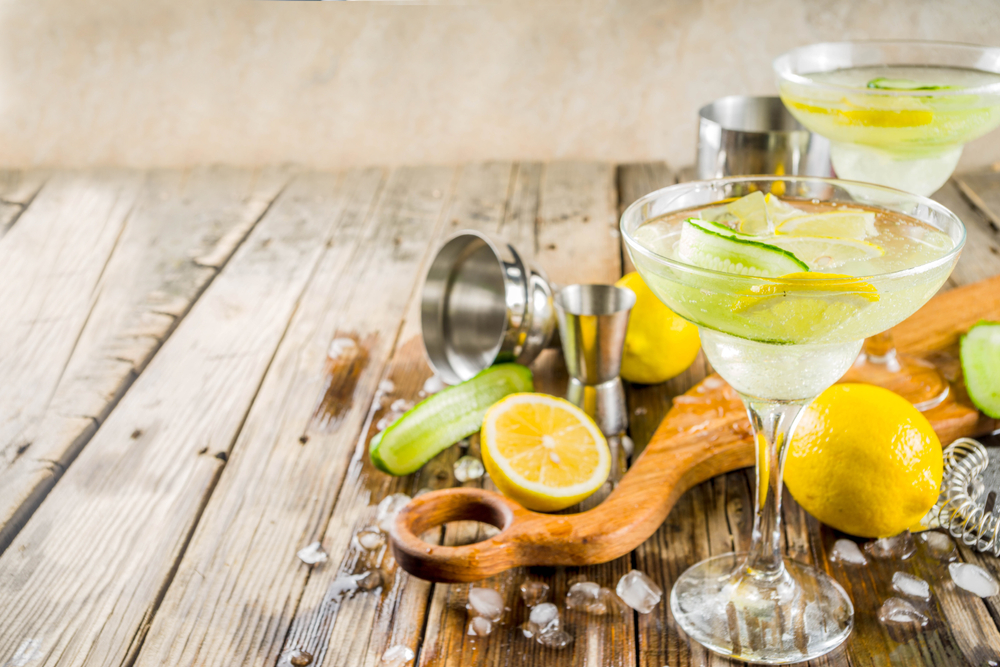
As a gin lover, I have always been curious about the health aspects of this popular spirit. Here are some key points to consider:
Calories and Carbohydrates
Gin is a low-calorie and low-carbohydrate alcoholic beverage. According to WebMD, a 1.5-ounce serving of gin contains only 97 calories and 0 grams of carbohydrates.
This makes gin an excellent choice for those who are watching their weight or following a low-carb diet.
Protein and Antioxidants
Gin does not contain any significant amount of protein. However, it does contain some antioxidants that can be good for your health.
Juniper berries, which are the main ingredient in gin, are rich in antioxidants that can help protect your cells from damage caused by free radicals.
Moderation is Key
While gin can be a good choice for those who are watching their weight or looking for an alcoholic beverage that is low in carbohydrates, it is important to remember that moderation is key.
Drinking too much alcohol can have negative health effects, such as liver damage, high blood pressure, and increased risk of cancer.
Conclusion
In conclusion, gin can be a good choice for those who are looking for a low-calorie and low-carbohydrate alcoholic beverage. It also contains some antioxidants that can be good for your health.
However, it is important to remember to drink in moderation and to always be aware of the potential negative health effects of drinking too much alcohol.
Gin Around the World
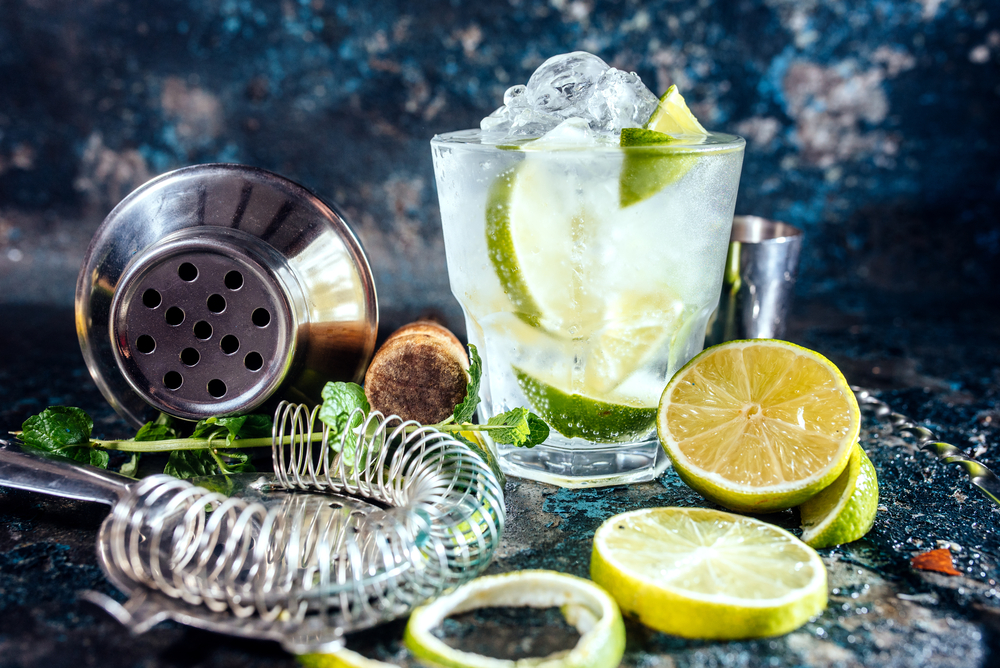
As a gin enthusiast, I have had the pleasure of trying different types of gin from around the world. Gin is popular in the UK, where it is often used as the base for summer cocktails.
However, gin is enjoyed globally, and each region has its unique take on the classic spirit.
English gin is perhaps the most well-known type of gin worldwide. It is often referred to as London dry gin and is characterized by its strong juniper flavor.
English gin is made by distilling a neutral spirit with botanicals, including juniper berries, coriander, and angelica root. The result is a dry, crisp, and refreshing gin that is perfect for classic cocktails like a gin and tonic.
The Netherlands is the birthplace of gin, and the Dutch have been producing gin since the 17th century. Dutch gin, also known as genever, is made from a malted grain similar to whiskey and has a maltier and sweeter flavor than English gin.
It is also distilled with a variety of botanicals, including juniper berries, but is often aged in barrels, giving it a more complex flavor profile.
Scandinavian countries have their version of gin, known as aquavit. Aquavit is made from a base of grain or potato and is flavored with a variety of herbs and spices, including caraway, dill, and fennel. It has a distinct anise flavor and is often enjoyed as a digestif.
Barrel-aged gin is a newer trend in the gin world and is becoming increasingly popular. Barrel-aged gin is aged in oak barrels, giving it a flavor similar to whiskey.
The aging process also mellows out the juniper flavor, resulting in a smoother and more complex gin.
In conclusion, gin is a versatile spirit enjoyed worldwide, with each region putting its unique spin on the classic drink.
From the strong juniper flavor of English gin to the maltier taste of Dutch gin and the anise notes of Scandinavian aquavit, there is a gin out there for every palate.
Frequently Asked Questions
What are the different flavors of gin?
Gin has a unique taste that comes from the distillation of botanical ingredients, with juniper berries playing a significant role. Different gin brands use different botanicals to create their signature flavors.
Some common botanicals used in gin production include coriander, citrus peels, angelica root, and other herbs and spices. These botanicals give gin a wide range of flavors, from floral and fruity to spicy and herbal.
How does the taste of gin compare to vodka?
Gin and vodka are both clear, distilled spirits, but they have distinct flavor profiles. Vodka is typically made from grains or potatoes and has a neutral taste, while gin is made from botanicals and has a unique taste that comes from juniper berries.
Gin is also typically stronger in flavor and aroma than vodka.
Is gin good to drink straight?
Gin can be enjoyed straight, but it is typically served in cocktails. The strong and complex flavor of gin can be overwhelming for some people when consumed straight. However, if you enjoy the taste of gin, you can sip it neat or on the rocks.
What are some gin cocktails to try?
There are many classic gin cocktails to try, including the Gin and Tonic, Martini, Negroni, and Tom Collins. Gin is also a popular ingredient in many modern cocktails, such as the Aviation, French 75, and Gin Fizz.
What is the taste of gin?
Gin has a unique taste that comes from the distillation of botanical ingredients, with juniper berries providing the signature “piney” or “Christmas tree-like” taste.
Along with a pine-like taste, most gin varieties also have a citrus flavor to them. The citrus flavor comes from the addition of citrus peels to most varieties of gin.
What does gin taste like for the first time?
The taste of gin can be overwhelming for some people when they try it for the first time. The strong and complex flavor of gin can take some getting used to, but many people enjoy the unique taste of gin once they acquire a taste for it.
Gin has a pine-like taste with a hint of citrus scent and a typically intense alcoholic bloom.



